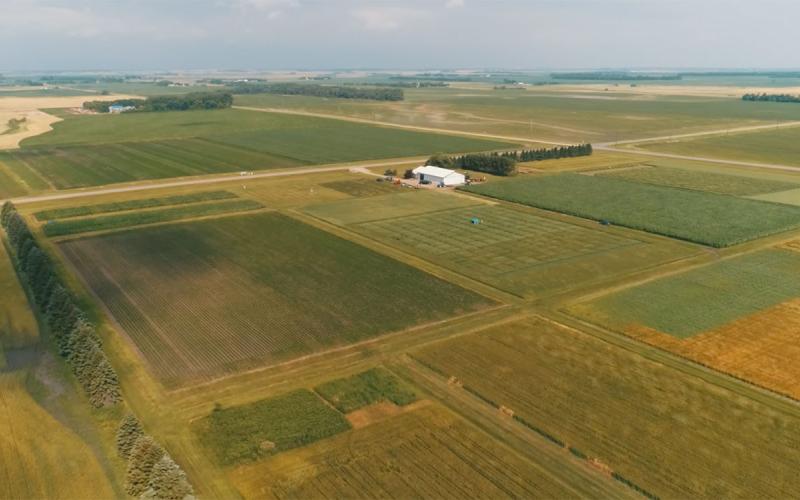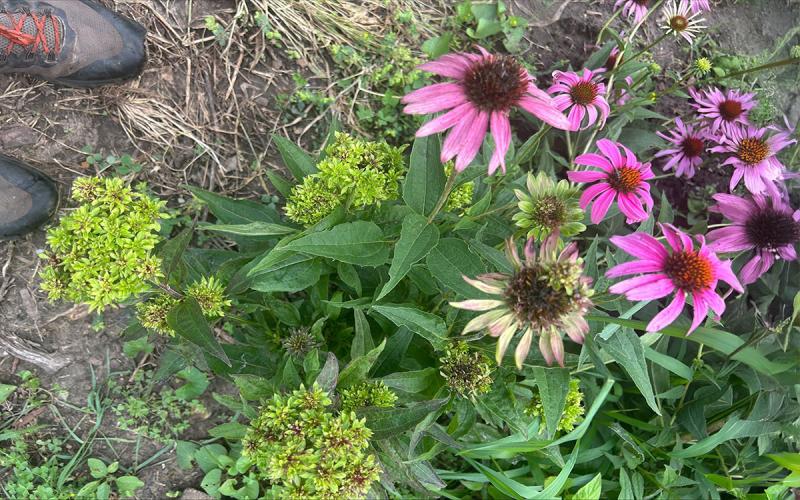Written with contributions by Emmanuel Byamukama, former SDSU Extension Plant Pathologist and Shaukat Ali.
Winter wheat fields scouted last week show an increase in fungal leaf diseases and bacterial leaf streak. Among the fungal diseases, the most common leaf diseases are tan spot, Stagonospora leaf blotch, and stripe rust. The risk for Fusarium head blight has also started to increase in a number of areas in the state. The build-up of these diseases is due to the conducive weather conditions (frequent rainfall and cooler temperatures) currently being experienced in several locations in the state.
Disease Update
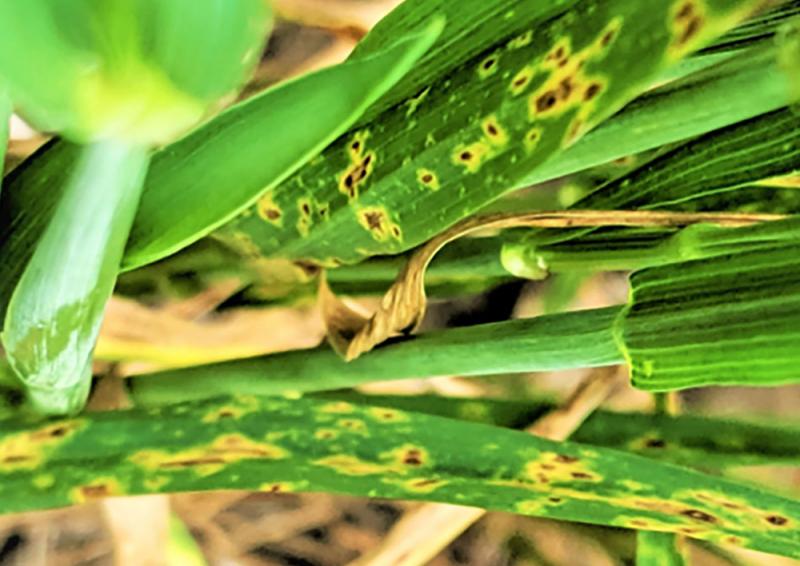
Tan Spot
Tan spot starts to develop from the lower leaves and can reach the flag leaf causing significant yield loss.
Tan spot lesions have a dark center surrounded by a distinct yellow halo (Figure 1). Tan spot is very common and can develop on wheat throughout the season.
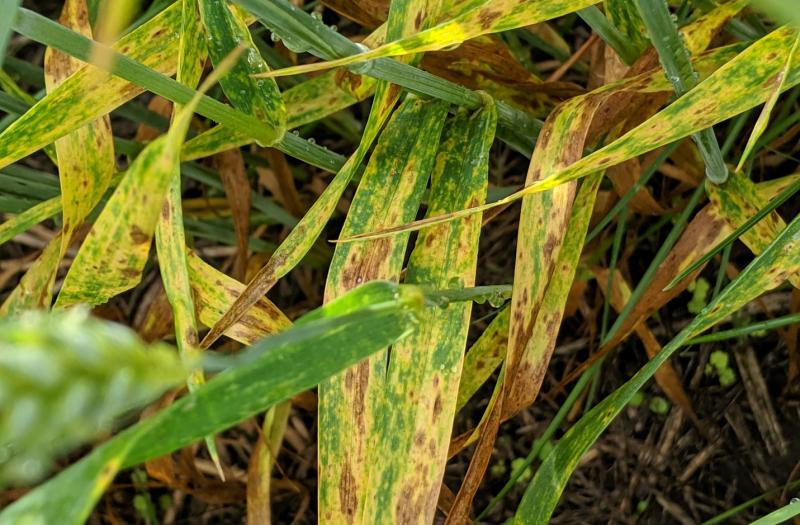
Stagonospora Leaf Blotch
Stagonospora leaf blotch was not as commonly found as tan spot; but, in fields found with this disease the severity was high (Figure 2). Stagonospora leaf blotch is caused by the fungal pathogen, Stagonospora spp. Symptoms often develop later in the growing season when temperatures are warm. Stagonospora leaf blotch starts as a yellowish fleck that later becomes a grayish brown lesion (Figure 2). These lesions can coalesce (grow together) to form larger lesions; while several lesions on a leaf can lead to leaf death. Stagonospora leaf blotch inoculum comes from wheat residue and stubble from grassy weeds. Stagonospora blotch can be distinguished from tan spot by diffused yellow halo around the lesion whereas tan spot has distinct yellow halo around the lesion.
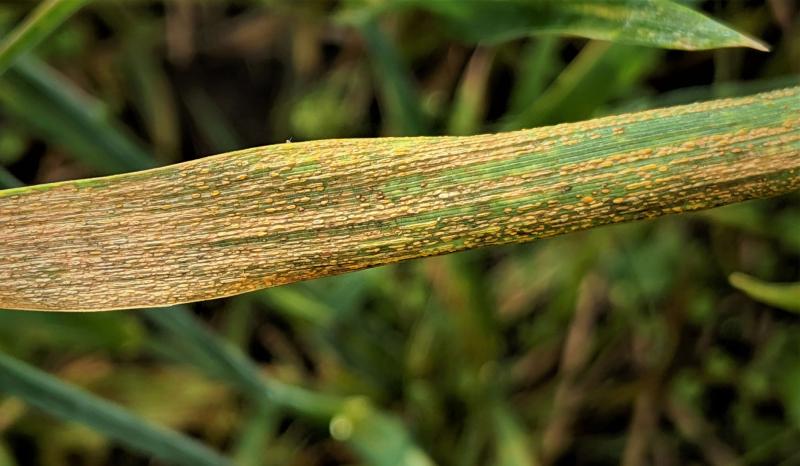
Stripe Rust
Stripe rust is developing on a few cultivars and some plants have leaves covered with stripe rust pustules (Figure 3). Continued development of stripe rust on a leaf can lead to the leaf losing a lot of moisture (due to punctured leaf epidermis by the stripe rust pathogen) and leaf death (Figure 3).
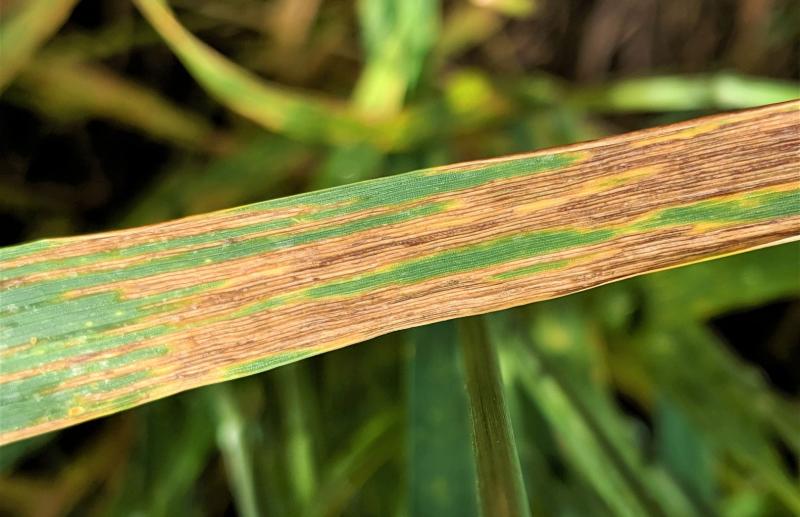
Bacterial Leaf Streak
Bacterial leaf streak is just starting to develop in winter wheat. This disease is characterized by long narrow brown lesions (streaks) that run parallel to the leaf veins (Figure 4). Symptoms start to develop in the top half of the flag leaf or leaf below flag leaf. Continued disease development can lead to premature leaf death. Bacterial leaf streak develops later in the season under warm temperatures and high relative humidity.
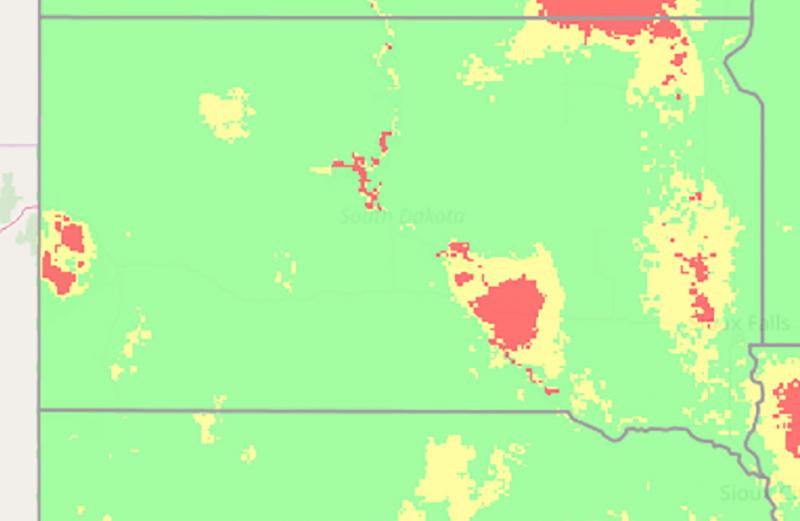
Fusarium Head Blight
The risk for Fusarium head blight (FHB or scab) picked up this week owing to the moisture and warming temperatures for several locations in South Dakota. The FHB prediction tool shows several counties in the Northeast and Southern half of the state and also along the Missouri River having moderate to high risk for scab (Figure 5). As moisture and temperatures continues to change, the predicted risk may also change.
Management
For winter wheat that is done flowering, fungal leaf diseases developing after this growth stage may not cause significant yield loss. Most fungicide labels restrict application to heading or between 30-45 days before wheat harvest. For fields that are not past flowering, a fungicide can be applied to protect the flag leaf from fungal pathogens. Strobilurin fungicides (QoI FRAC Code 11) should not be applied to wheat after heading. Fungicides effective against FHB and leaf diseases can be found in the publication, “Fungicide Efficacy for Control of Wheat Diseases” courtesy of the North Central Regional Committee on Management of Small Grain Disease.
